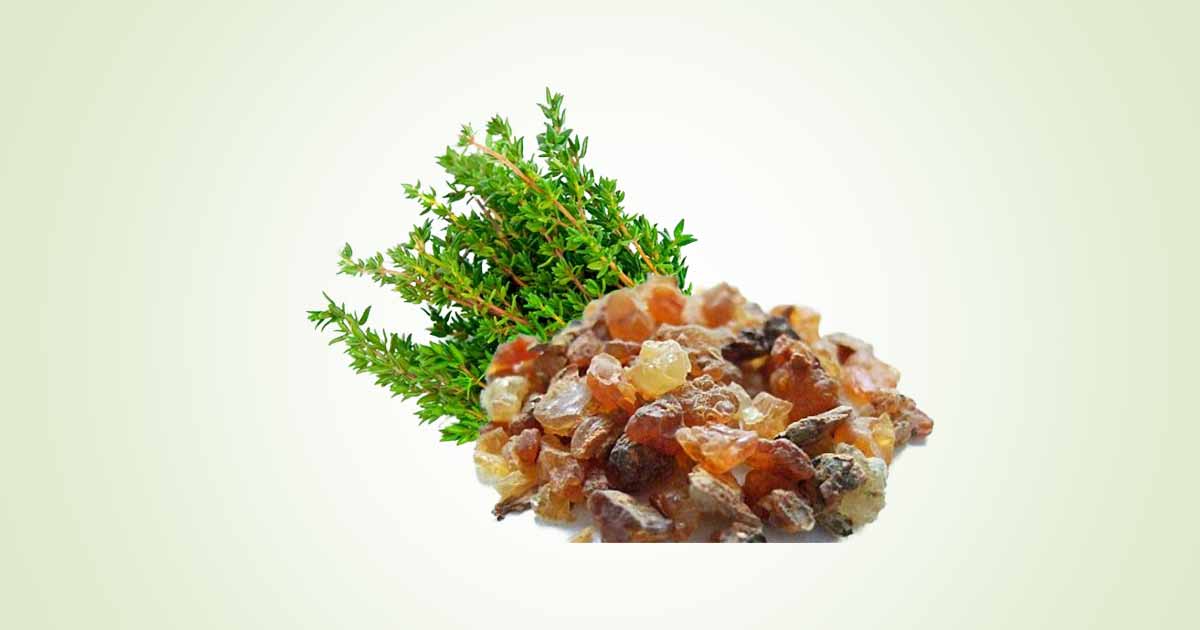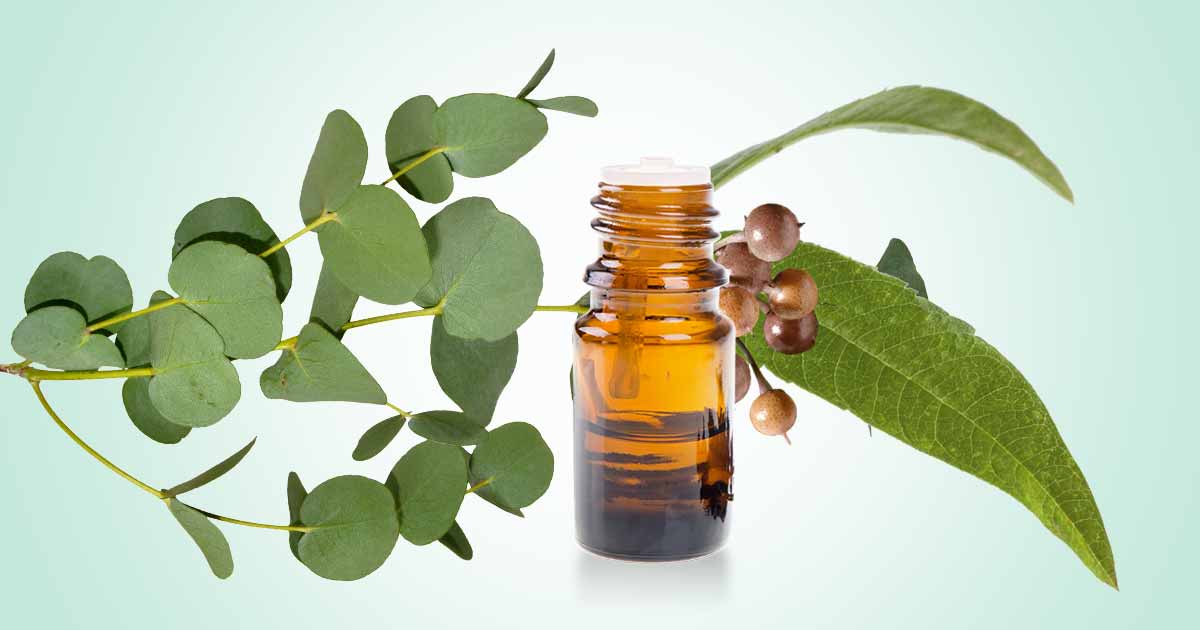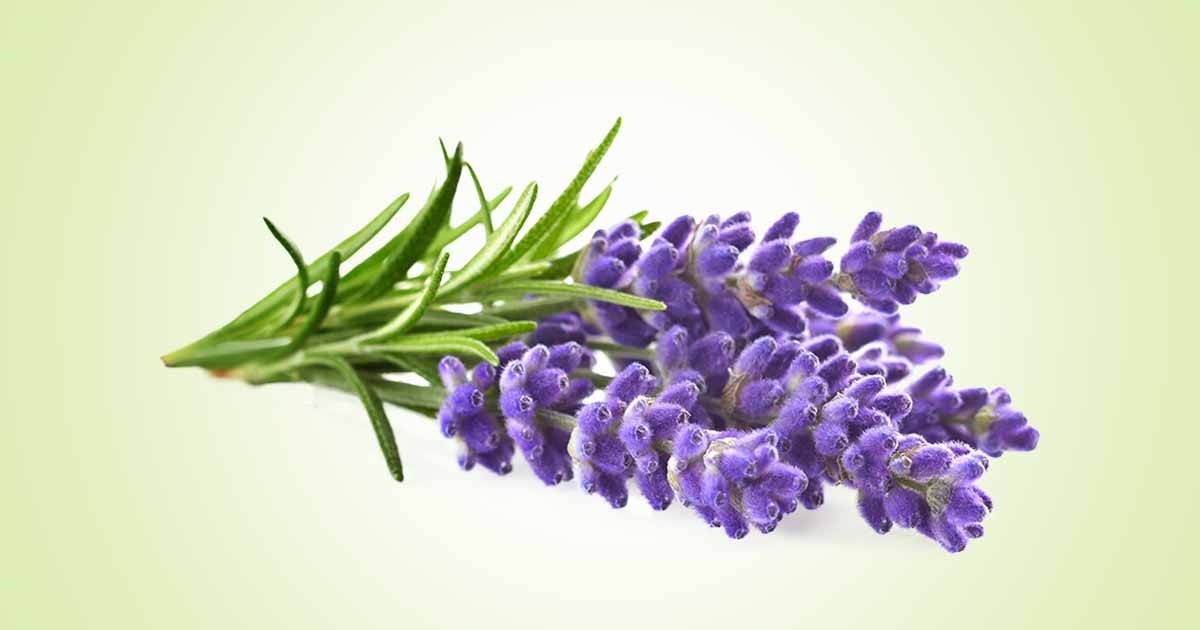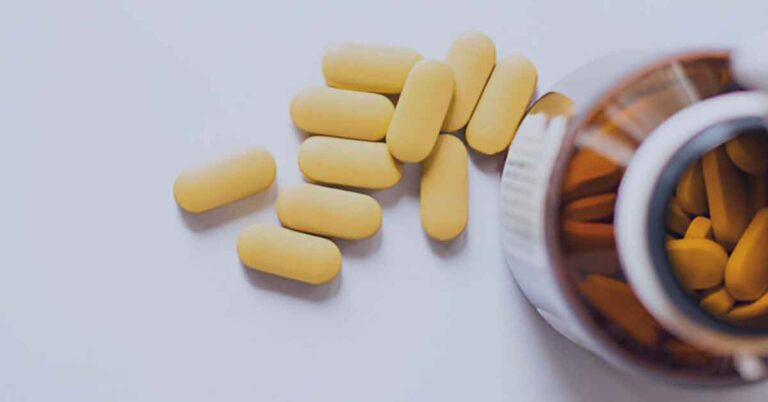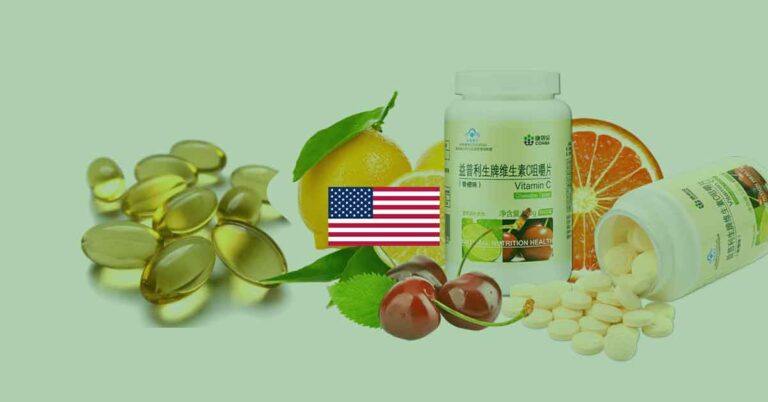Myrrh is the extract produced by the secretory tissues of the bark of the Commiphora species. The pale-gray discharge or a reddish-brown resin from the Commiphora are used as fragrance in perfume, cosmetics, aromatherapy, ointment, bouquet and in traditional medicine. Other therapeutic benefits have since been discovered.
They belong to the family, Burseraceae. It is native to Ethiopia, Kenya, Oman, Saudi Arabia, Somalia, and India. The Arabic word “murr” means “bitter” and explains myrrh’s taste and balsamic odor. Myrrh is also called myrrha, gum myrrh, common myrrh, is a sturdy, spiny, glabrous shrub.
The word, Commiphora is from the Greek ‘kommis’ and ‘phora’ meaning gum bearer. Commiphora myrrha is regarded as the true myrrh. Some other Commiphora species produce resins.
Other important Commiphora species are C. molmol, C. myrrha, C. mukul, and Commiphora opobalsamum. Commiphora mukul or “false” myrrh is not a source of myrrh, but produces guggulu resin, a reported cholesterol lowering agent.
The short tree which can grow up to 4 m, spinescent branches and bark that has pale-gray discharge or a reddish-brown resin. The leaves are trifoliate, greyish green, oblong to oval and have 3 leaflets per leaf. The four-petal flowers are yellow-red and narrowly oval. Fruits are ovoid, flattened, while the seed is smooth with gentle swellings.
It grows in open Acacia, Commiphora bushland on shallow soil.
Myrrh when combined with water gives an emulsion composed of 2–8% volatile oil, 23–40% resin (myrrhin), and 40–60% gum (Shameem, 2018).
In traditional medicine, it is used to treat wounds, mouth ulcers, aches, fractures, parasitic infection, stomach disorders, jaundice, fatigue, microbial infections, leprosy, rheumatism, syphilis, gout, sores, skin ulcer, and inflammatory diseases. Also, it was earlier used for mummification and cremation.
Myrrh has antiseptic, astringent, anthelmintic, antitussive, carminative, emmenagogue, and as an expectorant. The sesquiterpene lactones from myrrh are used in pharmaceutical preparations.
Myrrh is recognized as safe (GRAS) by the FDA, and is used in flavoring food. It is used to flavor beverages, food, candy, baked goods, chewing gum, gelatins, frozen desserts, puddings, soft drinks, and meat products, while the lotion is used as cleansing agents, moisturizers, skin lesion treatments, and fragrances, and as incense. It is also used in dental preparations like toothpastes, mouthwashes.
Frankincense, myrrh, are also symbolic and are used as incense in religious and cultural ceremonies.
Table of Contents
Constituent
Myrrh gum or oleo-gum resin
Myrrh is the aromatic tasting oleo-gum resin, with bitter or acrid from the stem of Commiphora species. It is made of impurities, volatile oils, alcohol soluble resins, and water-soluble gum.
Terpenoids, especially the sesquiterpenoids and triterpenoids are the main constituents.
The gum or resin contains commiphorinic acid, α-, β-, and γ-commiphoric acids, cuminaldehyde, eugenol, commiferin, α- and β-herrabomyyhols, cholestrerol, heerboresene, elemol, acadinene, compesterol, kerto steroids, β-sitosterol, 3-epi-α-amyrin, α-amyrone, many furano-sesquiterpenes (like furanodienone, furanodiene, curzerenone, lindestrene, 2-methoxyfuranodiene and 2-acetoxyfuranodiene).
Myrrh Essential Oils
The essential oil is deep amber, and has a warm, spicy, bitter and smoky aroma. It is a natural antiseptic, and is used to treat mouth and skin issues.
Terpenoids
- Mono-terpenoids: camphene, myrcene, limonene α-pinene, and β-pinene.
- Sesquiterpenoids: Β-selinene β-Elemene, α-humulene, α-copaene, and germacrene B
- Furanosesquiterpenoids: Elemanolide, guaianolide, and cadinanolide.
- Diterpenoids: cembrane, aracopimaric acid, abietic acid, dehydroabietic acid, and verticillane
- Triterpenoids: cycloartane, dammarane, oleanane, octanordammarane, runca, anostane polypodane, and ursane.
- Steroids: cholestane steroids, pregnane steroids, Z-, and E-guggulsterones, mukul
- Flavonoids in the flower, stem, and bark, but not in the resin.
- Lignans
- Carbohydrates as polysaccharides
- Long chain aliphatic derivatives like 1,2,3,4-tetrahydroxy like guggultetrol-20 and D-xylo-guggultetrol-18
Health Benefits of Myrrh
Dental health: The resin extracts of myrrh inhibit Enterococcus faecalis in the tooth cavity. The activity is similar to standard drug, 2% chlorhexidine.
The British Herbal Pharmacopoeia shows that the tincture of myrrh can serve as a mouthwash in gingivitis and ulcers. It is a constituent in tooth powder, and combined with borax in tincture and other ingredients in mouth-wash.
It is also used topically to relieve inflammation in the pharyngeal and oral mucosa. The fragrance and astringent property is utilized in mouthwashes and gargles.
Anti-inflammatory activity: Resin extract from C. mukul exhibit anti-inflammatory property against LPS-induced inflammation (Cheng et al. 2011). Compounds such as E and Z-guggulsterones, myrrhanone A, myrrhanol A, and mukulol inhibit nitric oxide synthase (iNOS) induction. E-guggulsterone and Cembrene also inhibit COX (COX-1, and COX-2).
Myrrh also stimulated the production of cytokines, IL-6 and IL-8, but inhibited IL-1β production. The plant extract also inhibit formalin-induced paw edema, and carrageenan-induced mice paw edema.
Hence, myrrh could be helpful in managing inflammatory condition such as rheumatoid arthritis.
Antimicrobial activity: The extract from myrrh inhibit bacteria and fungi such as C. albicans, Streptococcus pyogenes, S. albus, and Staphylococcus aureus, hence it may be useful in treating gingivitis pharyngitis, phyorrhoea, and sinusitis.
The essential oils and extract also inhibit dermatophytes such as Microsporum gypseum, Microsporum canis, Trichophyton rubrum, Trichophyton mentagrophytes, and Trichophyton verrucosum. The oil from the plant has been used to treat Candida albicans, Tinea pedis fungal infections, and subcutaneous wound (Stevensen 1998). Also, it is used as a vaginal wash for thrush, and as a foot bath for athlete’s foot.
Commiphora extract also exhibits antiviral activities by mechanisms such as inhibition of the enzyme, DNA polymerase in viral strains, and direct inactivation and disrupting the virion envelope. It showed activity against herpes simplex virus type 1 (HSV-1) and influenza virus type A (H1N1).
Antioxidants: Compounds in Commiphora species such as diterpenes, sesquiterpenoids (2methoxy-furanogermacren-6-onemyrrhone and 3-methoxy-furano germacradien-6-oneall), sterols, triterpenes (ursolic and oleanolic acid), and essential oils are powerful antioxidants.
The radical scavenging effect of these compounds could be useful in producing functional foods, pharmaceutical, and cosmetic preparations.
Anticancer effect: Myrrh induce apoptosis and stoppage of tumor cell proliferation, prevent cell multiplication and cause cell suicide of GC cells, possibly by downward control of COX-2 formulation in GC cells (Sun et al. 2020)
Constituent such as elemene (mainly β-elemene) act by activating p38MAPK in glioblastoma (Yao et al. 2008). Also, S-epoxy-4R-furanogermacr-10-3n-6-one, furose-type sesquiterpene rel-1S isolated from myrrh has cytotoxic activity on MCF-7 cell line of breast cancer. This compound also combines with bisabolene in myrrh to reduce breast cancer cells.
Cyclobolinane, a triterpenoid has a cytotoxic effect on PC3 and DU145 prostate cancer cell lines (Shameem 2018). Furano-sesquiterpene compounds from the plant may inhibit leukemia and prostate cancer.
Analgesic activity: Two sesquiterpenoid compounds, furanocudesma-1, 3-diene, and curzerene may have an anesthetic effect by acting on the opioid receptor.
The plant extract prevents peripheral nerve pain, relieve pain in nerves and body joints, suppress prostaglandin, and relieve pain from fever.
Anti-diabetic effect: Myrrh may achieve glycemic control by reducing blood glucose, and increasing insulin concentration. The extract also reduced the rate of gluconeogenesis in hepatocytes of diabetic rats.
Gastrointestinal effect: Commiphora extract stimulates the smooth muscle tissue and may stimulate peristalsis. Also, C. molmol affects the gastric mucus secretion and increase nucleic acid and nonprotein sulhydryl concentrations.
It also tones the digestive tract and is used to treat diarrhoea, flatulence, dyspepsia, loss of appetite. In a study by Ghada Mansour et al., aloe- and myrrh-based gels proved to be effective in topical management of minor recurrent aphthous stomatitis (MiRAS). Aloe decreased ulcer size, erythema, and exudation; whereas myrrh reduced pain.
Effect on skin: It helps to regenerate the skin cells, boost white blood cells production, promote wound healing, and may help to treat eczema, wounds, wrinkles.
Hepatoprotection: Commiphora extract prevent oxidative damage. It attenuates liver injury induced by ammonia and decreased ammonia circulation and TNF-α of hyper-ammonemic rats (Mahmoud et al. 2017a).
In rats induced with hepatocarcinogenesis using DEN, resin extracts showed a significant decrease in tumor proliferation, markers of liver inflammation like LPO, NO, and angiogenesis (Mahmoud et al. 2017b).
Neuroprotective effect: From the resin of the plant, a runcate type sesquiterpenes, i.e., commiterpenes A–C(1–3) was isolated. It showed neuroprotective activity on MPP+ induced neuronal cell death in SH-SY5Y cells (Xu et al. 2011). It has anti-Alzheimer’s disease (AD) activity.
Manage respiratory symptoms and cough: Since the Commiphora extract has anti-inflammatory effect, it is used in sore throat, flu, and chest infection. The essential oils also have expectorant effect which is used in treating respiratory conditions. It is used in preparation for treating cough.
Prevent nasal congestion: The resin is an immune-stimulant, and can be helpful in cold and flu. It also has an expectorant for nasal congestion. As an analgesic compound, it relieves headache associated with nasal congestion when the steam is inhaled.
Anti‑acetylcholinesterase activity: Acetylcholinesterase inhibitors are used to boost retention and learning. They are also called “nootropic herbs” or “phyto-nootropics”. Other uses are as insecticides.
Terpenoid compounds in the plant extract inhibits AchE by both hydrophobic interactions and hydrogen bonding.
Antiparasitic effect: Myrrh is schistosomicidal against phases of S. mansoni due to the essential oils and resin. Myrazid is a patented preparation from myrrh plant oleo resin used in Egypt for schistosomiasis and fascioliasis. In animal studies, it completely eradicated Fasciola gigantica in rabbits.
Also, it showed promise in eradicating heterophytes, a common parasite found in snails and fish. And also a molluscicidal activity on B. alexandrina and Biomphalaria alexandrina.
Myrazid also eradicate Giardia lamblia, the parasite that cause diarrheal disease giardiasis in the intestine.
Anti-ulcer effect: The plant extract protected the gastric mucosa from various ulcerogenic agents (Al-Harbi et al. 1997).
Contraindication
Myrrh has emmenagogic activity (produces menstrual blood), so it should be avoided in pregnancy. It may lead to miscarriage.
Drug Interactions
Myrrh may interact with warfarin and other coumarin derivatives, reducing their international normalized ratio (INR). It could also interact with antidiabetic medications, lowering the blood sugar below normal range.
Side Effects
Myrrh may cause allergic reaction such as dermatitis, especially in patients using transdermal myrrh formulations for tendonitis. It resolved with weeks after topical corticosteroid therapy.
References
- https://www.researchgate.net/publication/365499869_Commiphora_myrrh_a_phytochemical_and_pharmacological_update
- https://www.drugs.com/npp/myrrh.html
- https://apps.worldagroforestry.org/treedb2/AFTPDFS/Commiphora_myrrha.PDF
- https://www.herbalgram.org/resources/herbalgram/issues/93/table-of-contents/herb-profile-myrrh/
- https://pubmed.ncbi.nlm.nih.gov/24164309/

